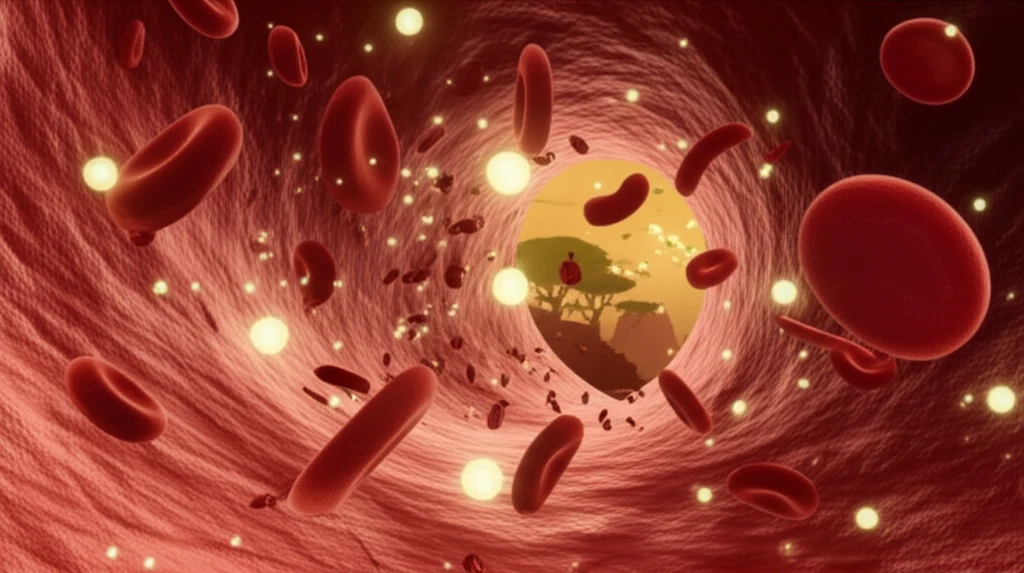
Sickle Cell Complications: How Low Nitric Oxide Levels Impact Ghanaians
"A new study sheds light on the link between nitric oxide deficiency and sickle cell disease complications, offering potential avenues for improved treatment and management."
Sickle cell disease (SCD) is a genetic blood disorder affecting millions worldwide, with a significant presence in Ghana. While much research has explored the underlying causes and broad effects of SCD, a recent study published in the journal Vascular Health and Risk Management delves into a critical aspect of the disease: the role of nitric oxide (NO). This seemingly small molecule plays a surprisingly large role in the health of blood vessels, and its deficiency can lead to severe complications for those living with SCD.
Nitric oxide is essential for maintaining the normal tone of blood vessels, allowing them to relax and expand, which ensures smooth blood flow. When NO levels are insufficient, blood vessels can constrict, leading to vaso-occlusive crises (VOCs), a hallmark of SCD. These crises are characterized by intense pain and can cause long-term damage to organs and tissues. The new research investigates the link between reduced nitric oxide levels and specific SCD complications such as leg ulcers and priapism.
Researchers in Ghana conducted a comprehensive study comparing NO levels in SCD patients experiencing steady states, VOCs, and specific complications with those of healthy individuals. The findings reveal a compelling connection between low NO levels and the severity of SCD, opening potential new avenues for treatment and preventative strategies.
Nitric Oxide: The Unsung Hero of Vascular Health

Nitric oxide (NO) is a naturally occurring molecule in the body that acts as a vasodilator, meaning it helps relax blood vessels, improving blood flow. This function is vital for overall cardiovascular health, ensuring that oxygen and nutrients are efficiently delivered throughout the body. When NO levels are optimal, blood vessels remain flexible and open, preventing the clumping of blood cells and reducing the risk of blockages.
- Reduced vasodilation, leading to constricted blood vessels
- Increased risk of vaso-occlusive crises (VOCs)
- Increased adhesion of blood cells to vessel walls
- Elevated inflammation and oxidative stress
- Vaso-Occlusive Crisis (VOC): During a VOC, the study found a significant drop in NOx levels, exacerbating pain and tissue damage.
- Leg Ulcers: Patients with leg ulcers, a common and debilitating complication of SCD, also exhibited markedly low NOx levels. Impaired blood flow due to NO deficiency likely contributes to the poor healing of these ulcers.
- Priapism: This painful and prolonged erection, another known complication of SCD, was also associated with reduced NOx levels, further underscoring the role of NO in vascular function.
Looking Ahead: The Future of SCD Treatment
This research underscores the importance of nitric oxide in managing sickle cell disease and its complications. While further studies are needed, these findings suggest that therapies aimed at boosting NO levels or preventing its depletion could offer significant benefits to individuals living with SCD. Potential strategies include:<ul><li><b>L-arginine supplementation:</b> Providing the building blocks for NO production.</li><li><b>Nitrate-rich diets:</b> Increasing NO levels through dietary means.</li><li><b>Drugs that inhibit arginase:</b> Preventing the breakdown of L-arginine.</li></ul>By focusing on nitric oxide, researchers and clinicians can potentially develop more effective and targeted treatments, improving the quality of life for people with SCD.
